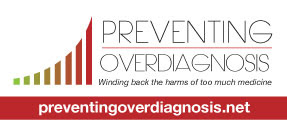Since
human papillomavirus (HPV) vaccines were first added to the routine U.S. childhood immunization schedule nearly two decades ago, the evidence of their effectiveness has become stronger every year.
In 2019, a
Medicine by the Numbers in
American Family Physician summarized a Cochrane review of 26 randomized, controlled trials comparing HPV vaccines to placebo. The authors found that vaccination reduced the risk of precancerous cervical lesions (cervical intraepithelial neoplasia [CIN] grades 2 or 3 and adenocarcinoma in situ) with numbers needed to treat (NNT) ranging from 55 to 73, depending on participants’ baseline HPV status. A
2021 observational study of girls and young women in England found that vaccination at ages 16-18, 14-16, and 12-13 years was associated with reductions in cervical cancer of 34%, 62%, and 87%, respectively. Remarkably,
a study published this year found that 30,000 Scottish women who received at least one dose of HPV vaccine at age 12 or 13 had developed zero cases of invasive cervical cancer 11 to 20 years later!
Nonetheless, HPV vaccination coverage among U.S. adolescents remains lower than that for other childhood vaccines. Although coverage has
gradually increased over time,
an analysis of 2022 National Immunization Survey (NIS) data found that only 69% of 13 year-olds and 77% of 17 year-olds had received at least one dose, and 50% and 68% of these respective age groups were up-to-date (had received 2 doses if starting the series before age 15, or 3 doses if starting later). In comparison, 90% of 17 year-olds had received a least one dose of tetanus, diphtheria, and acellular pertussis (Tdap) and at least 2 doses of measles, mumps, and rubella (MMR) vaccines.
Historically, children living in socioeconomically disadvantaged households have been less likely to be up-to-date on immunizations. The Centers for Disease Control and Prevention’s
Vaccines for Children program, which celebrates its 30th anniversary this year, aims to eliminate disparities in access by providing vaccines at no cost to children who are uninsured, Medicaid-eligible, American Indian or Alaska Natives.
A
recent study of the 2017-2021 NIS examined factors associated with the intent to vaccinate by socioeconomic status and education level among parents of adolescents who had not received HPV vaccine. Participating parents were considered “advantaged” if their income was greater than 200% of the federal poverty level and they had at least a high school education; parents with lower incomes who had not completed high school were considered “deprived.” Surprisingly, 65% of advantaged parents of unvaccinated adolescents reported no intent to vaccinate in the future, compared to 41% of parents in the deprived group. Reasons for not vaccinating also differed between the groups: the advantaged group most often cited “safety concerns,” while the deprived group reported “lack of knowledge,” “not recommended,” and “not needed.” These data suggest that HPV vaccine hesitant parents may respond to different approaches.
In a
2015 AFP editorial, Drs. Herbert Muncie and Alan Lebato advised presenting the vaccine’s benefit as cancer prevention rather than focusing on HPV as a sexually transmitted infection, and taking a non-judgmental approach when explaining the recommendation to vaccinate:
To improve acceptance of immunizations, physicians must be knowledgeable about vaccine safety and effectiveness, and non-judgmental about parents' beliefs. … Hesitant parents may respond to the CASE method: the physician corroborates the parents' concerns, talks about his or her own experience with the vaccine, summarizes the science about vaccine effectiveness and safety, and explains advice in terms of the child's health.
Regarding safety, the World Health Organization’s Global Advisory Committee on Vaccine Safety has
repeatedly found no evidence of a causal association between HPV vaccination and a variety of serious adverse effects.
**












